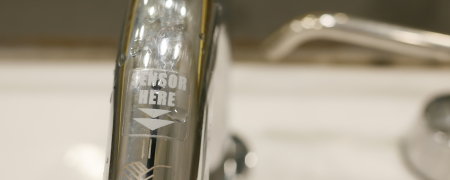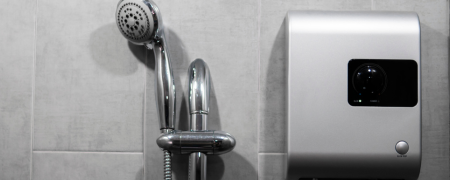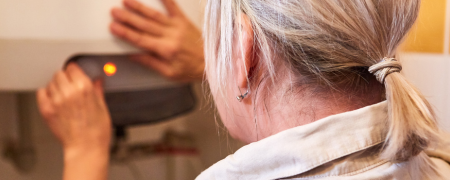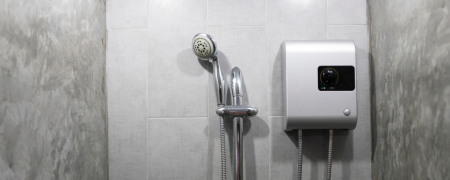Winterizing Your Home: Tips for Optimal Performance from Your Electric Heater
Tips for Optimal Performance from Your Electric Heater As winter approaches, ensuring that your electric heater is ready to tackle the cold is essential for a cozy and comfortable home. Electric heaters are reliable allies in keeping your living space warm during the chilly months, but optimizing their performance is key. This guide provides valuable tips for winterizing your home and maximizing the effectiveness of your electric heater to create a snug environment.
**1. Seal Drafts and Insulate Windows
Before relying on your electric heater, take a proactive approach to prevent heat loss. Seal drafts around windows and doors to minimize cold air infiltration. Additionally, consider insulating windows with thermal curtains or weather stripping to create a barrier against the winter chill. By addressing these potential points of heat escape, you reduce the workload on your electric heater, making it more efficient.
2. Proper Placement of the Heater
Where you place your electric heater can significantly impact its performance. Position the heater in the room where you spend the most time, ensuring that it has ample space to circulate warm air. Avoid placing furniture or other obstacles directly in front of the heater, as this obstructs the airflow. For optimal efficiency, position the heater near the center of the room, allowing the warmth to distribute evenly.
3. Regular Maintenance Checks
Ensure that your electric heater is in top condition by conducting regular maintenance checks. Clean the dust and debris that may accumulate on the heating elements or fan blades. Check for any signs of wear and tear, and promptly address any issues. Routine maintenance enhances the heater’s longevity and ensures that it operates at peak efficiency when you need it the most.
4. Set Thermostat to an Efficient Temperature
Setting the thermostat to an efficient temperature is crucial for both comfort and energy savings. During winter, aim for a temperature that provides warmth without unnecessary energy consumption. Consider wearing layers and using blankets to supplement the heat from the electric heater. Additionally, invest in a programmable thermostat to automate temperature adjustments based on your daily schedule.
5. Use Space Heaters in Targeted Areas
If your home has specific areas that require extra warmth, consider using portable space heaters in those zones. This allows you to focus heat where it’s needed most without overworking your central heating system. Space heaters are efficient for providing localized warmth, making them a strategic addition to your winterization efforts.
6. Ensure Proper Insulation in the Home
Proper insulation is fundamental for maintaining a consistent and comfortable temperature. Check the insulation in your home, particularly in the attic and walls. Adequate insulation minimizes heat loss and enables your electric heater to operate more effectively. If needed, consider adding or upgrading insulation to create a thermal barrier against the cold.
7. Optimize Ceiling Fan Usage
Ceiling fans are not just for the warmer months. In winter, set your ceiling fan to operate in a clockwise direction at a low speed. This gentle circulation helps distribute warm air more evenly throughout the room. By leveraging the ceiling fan’s efficiency, you can complement the efforts of your electric heater and achieve a more balanced and comfortable indoor environment.
8. Utilize Humidifiers
Winter air tends to be dry, which can make your home feel colder than it actually is. By using humidifiers, you add moisture to the air, creating a more comfortable and warmer atmosphere. The added humidity helps your electric heater work more efficiently, as moist air retains heat better than dry air. Humidifiers also contribute to improved respiratory health during the winter months.
9. Practice Energy-Efficient Habits
In addition to optimizing your electric heater, adopt energy-efficient habits to reduce overall energy consumption. Turn off the heater when you leave a room, close doors and windows to contain heat, and leverage natural sunlight during the day. These small adjustments contribute to energy savings while still maintaining a cozy living space.
10. Consider Insulating the Water Heater
If you have a water heater in your home, insulating it can also contribute to energy efficiency. Insulating the water heater tank helps retain heat, reducing the need for the heater to work continuously. This step aligns with the overall goal of optimizing energy use in your home during the winter season.
Conclusion
Winterizing your home involves a combination of proactive measures and smart usage of your electric heater. By sealing drafts, ensuring proper insulation, and practicing energy-efficient habits, you create an environment that maximizes the effectiveness of your heater while minimizing energy consumption. With these tips, you’ll be well-prepared to face the winter months with a warm and inviting home.
Get Access Now
Ready to ensure optimal performance from your electric heater this winter? Visit for insights, comparisons, and expert recommendations on electric heaters. Discover models that cater to your winterizing needs, providing reliable warmth for a comfortable and cozy home.





Leave a Reply